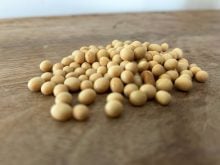Much of Kansas received 25 to 50 millimetres of rainfall last weekend, which is fantastic news for the state’s winter wheat crop, said a spokesperson for the Kansas Wheat Commission.
Topsoil and subsoil moisture in Kansas was rated as short or very short before the rainstorm, and winter wheat was struggling to emerge from the ground.
“There’s a pretty good swath of the state that got half an inch to up to two inches,” said Bill Spiegel, communications director with the Kansas Wheat Commission.
“Where we’re at in the wheat planting (progress)… being close to 90 percent complete, man, it’s a godsend.”
Read Also

Federal budget shows remaining disconnect between agriculture, policymakers, panelists say
Canada’s agriculture sector is still disconnected from policymakers in some ways, say panelists at a CAPI webinar
The U.S. Department of Agriculture’s Drought Monitor website rated conditions in Kansas as extreme exceptional drought in the second week of October, before the rain. For instance, U.S. National Weather Service statistics show that 270 mm of rain fell on Kansas City from April 1 to Oct. 10. In a normal year, Kansas City receives 700 mm of rain in that period.
So 25 to 50 mm of rain is helpful, but dryness remains a concern, Spiegel said.
“I don’t think we can call this a drought buster by any stretch. We’re still mired in some of the worst drought conditions in umpteen decades.”
Hard red winter wheat acreage in Kansas has rebounded slightly from 2010, when growers planted 8.4 million acres, the lowest amount in the state since the 1950s.
Kansas producers planted 9.5 million acres of winter wheat in 2011, and that number may rise this fall, said Aaron Harries, marketing director for the Kansas Wheat Commission.
“My expectation would be that we would have at least a slight increase in planted acres,” he noted.
The USDA, in its World Agricultural Supply and Demand Estimates released Oct. 11, estimated total U.S. wheat acres at 55.7 million for 2012-13. In comparison, U.S. farmers planted 54.4 million acres in 2011-12 and 53.6 million in 2010-11.
Hard red winter plantings are estimated at 30 million acres.
In spite of the dry soil conditions, Kansas growers will probably plant more wheat this fall because prices are strong, Harries said.
The crop insurance rate for hard red winter wheat this year in the United States was set at $8.78 per bushel.
“They set that based off the commodity prices. So, yeah, that’s a fairly high number,” Harries said.
Wheat futures for July 2013 on the Kansas City Board of Trade were trading around $8.70 per bu. in mid-October.
Oklahoma producers seeded 5.5 million acres of winter wheat last year, but it’s hard to know if acreage will be slightly up or down this fall, said Mark Hodges, executive director of Plains Grains, a non-profit wheat marketing organization in Stillwater, Okla.
The drought hasn’t been quite as severe as Kansas, but subsoil moisture is extremely poor in many parts of the state, Hodges said.
The USDA rated the northern portion of Oklahoma as an exceptional drought in the second week of October and a large chunk of the state as an extreme drought.
“Last year, the drought wasn’t as extensive as it is this year, as far as area of coverage,” Hodges said.
“Last year it didn’t cover eastern Colorado, Nebraska, northern Kansas like it has this year.”
Oklahoma received extremely timely rains last October and November, which allowed growers to harvest a “pretty good” wheat crop this summer, Hodges said.
“But we still don’t have any subsoil moisture,” he added. “(Rain in November) would be extremely helpful, but historically that is not the normal pattern. It might be a long shot to hope that is what happens.”















